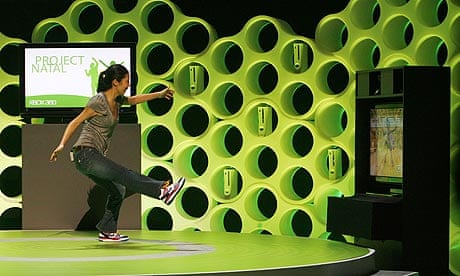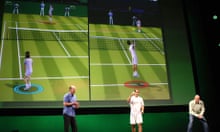Amid the hype and hysteria surrounding the Electronic Entertainment Expo (E3), the games industry's annual shindig in Los Angeles, Microsoft's big surprise – called Project Natal – turned out to be one of the standout announcements.
The system promises to bring gaming even further into the real world, allowing players to interact with the onscreen environment simply by moving or talking. It works its magic thanks to a sensor bar, attached to an Xbox 360, which is able to track their movement and actions in three dimensions. And as it even sports voice control and facial recognition, the stunning demonstrations on the E3 stage were more than a little reminiscent of the Tom Cruise film Minority Report.
So-called "gesture control" systems are a hot topic right now, bolstered by the success of the Nintendo Wii, a console that proved that ditching the old joystick and keyboard model can bring new audiences to gaming.
Project Natal has inevitably drawn comparisons to Nintendo's motion-sensitive Wiimote, and also to Sony's EyeToy – the PlayStation camera add-on first released in 2003 that never quite broke into the mainstream.
But while the resemblance is certainly there – and without the Wii, Microsoft would probably not be exploring this option – it is fair to say that the technology behind Natal is several levels more complex than either of its predecessors.
Not a great deal is known about its origins, but is seems that the system relies on technology from two pioneering Israeli companies working on depth-sensitive cameras, 3DV Systems and Prime Sense. Those systems involve technology originally developed for use on ballistic missiles that has been reworked to make it more palatable for use in people's homes.
Essentially, the camera sensors project radar-like beams that hit objects in the room and bounce back, allowing the machine to build up an accurate picture of what is in front of it.
Such systems have a surprisingly fine level of detail, even able to recognise different hand signals or small movements. Add the capability to incorporate facial recognition, and it's the sort of development that has not only gamers salivating, but also games producers.
Peter Molyneux, the legendary British game designer who sold his Lionhead studio to Microsoft in 2006, was among them – showing off a Natal-based project called Milo. Named after the game's virtual friend, Milo is able to understand what you do and react accordingly, including creating virtual replicas of the things you show to him. The display had the crowd enraptured.
But while Natal looks like science fiction made real, gamers are well aware that technology companies can make anything can work well in a demonstration. The real test will be when Natal goes on sale – which won't be until next year at the earliest.



